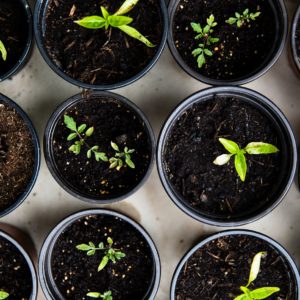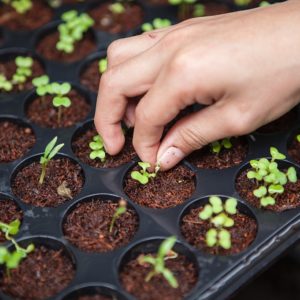Square foot gardening is a superb farming approach that allows you to get maximum yields from small-area farming. The available area is divided into square parts, each about 12” on one side. When done well, square foot gardening is an intensive way to grow vegetables, especially in urban or suburban settings where large vacant plots aren’t available. The major challenge with this method is that it packs the plants too close together, thus inhibiting the development of roots. As a result, intake of water and nutrients suffers, overall resulting in stunted plants. The simple tips below provide key guidance that can help make your urban garden a success.
1. Some Background
Square foot gardening was developed by one Mel Bartholomew, who published his first book in 1981. Ever since, his technique has proved immensely successful and wildly popular, even spawning a PBS TV series. In recent times, Mr. Bartholomew has launched the second edition of his popular book ‘All New Square Foot Gardening’.
2. 4-Foot Square
This farming technique is centered on a 4 foot raised square bed, which is then subdivided into a grid of total 16 squares. Herbs, flowers, and vegetables are densely farmed in each of these squares, using a special soil blend that features a mix of peat moss, vermiculite, and compost.
3. Seed Grouping
With square foot gardening, different seeds are grown in different squares. So, what determines the number of seeds grown in a single square? The kind of spacing needed based on the specific plant. For instance, a single Broccoli plant should be planted in a single square, whereas for leaf lettuce plants will work on the same square, as well as 9 bean (bush type) plants. There are a lot of online resources that provide ample information regarding what kind of spacing is required based on each plant type.
4. Vertical Growing
Some plants (known as vining plants) such as squash and cucumbers, ordinarily take up a lot of space. These plants are grown vertically through netting or frames. Other plants such as carrots, potatoes and others that require more depth are cultivated in an area with higher sides so that more soil is available to them. In a square foot garden, watering is usually done by hand so as to avoid waste.
5. Easier Access
Since square foot gardening involves relatively small 4’ x 4’ beds, the gardener is able to reach any plant from any side without having to step on and compact the soil. It’s even possible to attach a plywood bottom to the bed and raise it to table height so that it’s ideal for gardeners who have difficulties working with conventional beds.
6. Easy to Maintain
Want to grow 100% of the crop in 20% of the space? Try square foot gardening, which is super-efficient and ideal for space limitations. The densely
7. Fewer Seeds
Often considered one of the best gardening approaches for beginners, square foot gardening is easy to understand. More so, the small bed space is highly manageable since it requires lesser seeds than conventional planting approaches. This saves on both effort and money. Densely packed crops in a bed do create a ‘living mulch’ of kinds, which prevents weeds from either germinating or getting firmly established.
8. Getting the Mix Right
The special mix of soil required in square foot gardening is optimized to hold moisture so that the bed requires less water. The good thing with square foot gardening is that you can create your soil on top of already existing ground soil. This way, even people with poor, sandy, urban soils and those who’re concerned about pesticides from previously used land can succeed.
Got the gist of it? Make no excuses. Start square foot gardening right now, as a great strategy to make maximum use of limited urban spaces. For ideas on what to grow, you can check our article on top healthy herbs to grow in your backyard.




Leave a Reply